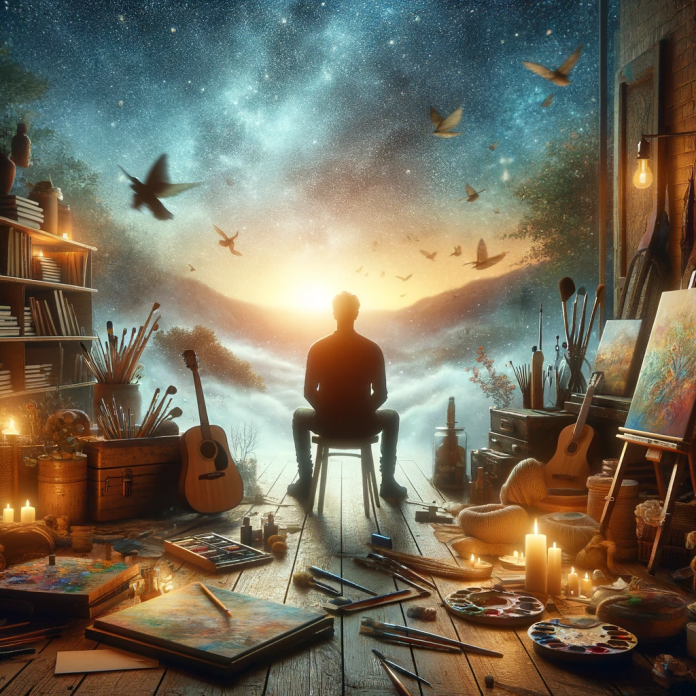When grief strikes, it can feel like an insurmountable mountain. The pain, the loss, the emptiness - it can all feel too much to bear. Yet, in the midst of this darkness, there is a beacon of hope: the arts. Through creative expression, we can navigate the turbulent waters of grief, finding solace, understanding, and ultimately, healing.
Understanding Grief
Grief is a complex, multifaceted experience that varies greatly from person to person. It is a natural response to loss, yet its manifestations can be anything but predictable. Some people may experience intense sadness, while others may feel numb or even angry. Understanding the nature of grief is the first step towards healing.
While grief is often associated with the death of a loved one, it can also be triggered by other forms of loss such as the end of a relationship, the loss of a job, or a major life change. Regardless of the cause, the pain of grief is real and valid. It is crucial to acknowledge these feelings and give yourself permission to grieve.
Art as a Tool for Healing
Art has long been recognized as a powerful tool for healing. It provides a safe space to express emotions that might be too difficult to put into words. Through painting, writing, music, dance, and other forms of artistic expression, we can externalize our grief, making it more manageable.
Art therapy, a form of psychotherapy that uses art as a medium of expression, has been shown to be particularly effective in helping individuals cope with grief. By creating art, we can gain insights into our feelings and learn to cope with them in a healthy way.
Visual Arts and Grief
Visual arts such as painting, drawing, and sculpture offer a tangible way to express grief. The act of creating something can be therapeutic in itself, providing a sense of control in a situation where one may feel powerless. Moreover, the finished artwork serves as a physical representation of one's emotions, providing a means to reflect and process feelings of grief.
For example, someone might paint a picture that represents their loved one, capturing their essence and commemorating their memory. Alternatively, they might create an abstract piece that represents their feelings of grief, using colors and shapes to convey their emotions.
Writing and Grief
Writing is another powerful tool for expressing grief. Whether it's journaling, poetry, or writing a letter to a lost loved one, putting pen to paper can be a cathartic experience. It allows for a direct, unfiltered expression of feelings, providing a release for pent-up emotions.
Writing can also provide a sense of continuity, helping to maintain a connection with the deceased. For instance, writing a letter to a lost loved one can help to express feelings of love and longing, while also acknowledging the reality of the loss.
Music and Dance
Music and dance can also serve as effective outlets for grief. Music, with its ability to convey a wide range of emotions, can provide comfort and solace. Creating or listening to music that resonates with one's feelings can be a therapeutic experience.
Dance, on the other hand, allows for a physical expression of grief. Through movement, one can release tension, express emotions, and find a sense of peace. Dance therapy, which combines movement with psychological therapy, can be particularly beneficial for those dealing with grief.
Embracing the Healing Power of Art
While art can be a powerful tool for healing, it's important to remember that the process of grief is unique to each individual. What works for one person may not work for another. It's about finding what resonates with you, what helps you to express your feelings, and what brings you comfort.
It's also important to remember that healing doesn't mean forgetting. It's about learning to live with the loss, integrating it into your life, and finding a way to move forward. Through art, we can honor our loved ones, express our grief, and find a path towards healing.
So, whether you're a seasoned artist or a complete novice, consider picking up a paintbrush, a pen, or a musical instrument. Express your grief, tell your story, and let art guide you on your journey towards healing.
Conclusion
Grief is a journey, a process that takes time and patience. It's a journey that can be lonely and painful, but also one of growth and self-discovery. And while the road may be long and winding, remember that you don't have to walk it alone. Through the arts, you can find a companion, a voice, and a light in the darkness.
So, let's embrace the arts. Let's use them as a tool for healing, for expressing our grief, and for finding our way back to ourselves. Because in the end, it's not about escaping the pain, but about learning to live with it, to understand it, and ultimately, to heal.


-banner.png)





